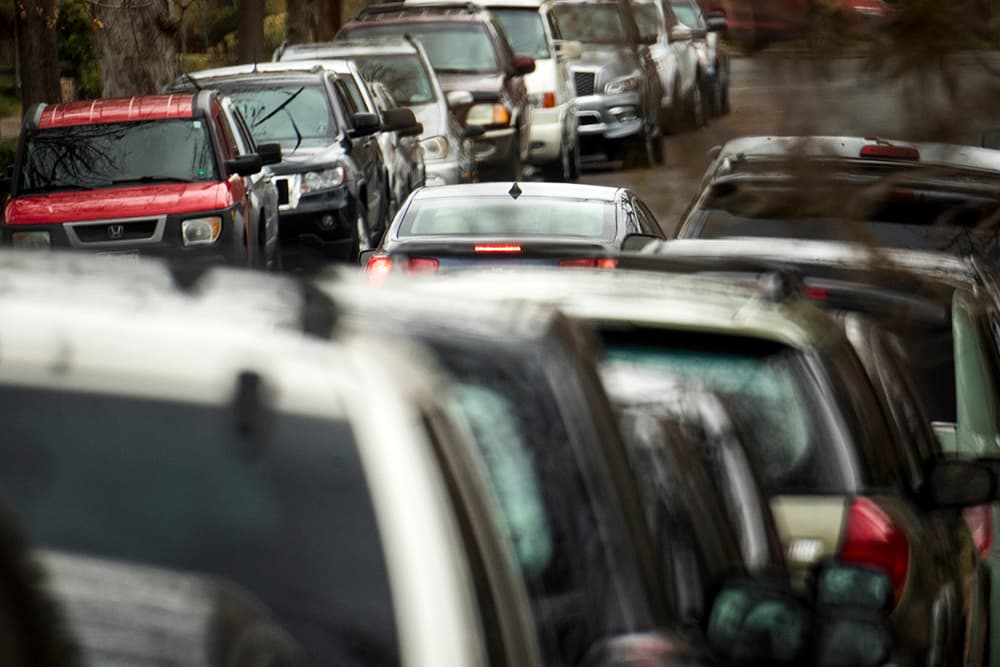
It's a step that Council President Albus Brooks said moves Denver backwards but that proponents said responds to important concerns of their constituents.
The issue is the small lot parking exemption, a component of Denver's zoning code that allowed developers in certain mixed-use zones to skip the parking when they develop lots that are 6,250 square feet or smaller.
There's a moratorium in place on using that exemption, and there were two proposals on the table. One, supported by Brooks, would have exempted parking for the first three stories if a project was close to transit and for the first two stories if it were farther from transit. The other, pushed by Councilman Jolon Clark, would require parking after the first two stories for projects close to transit and after the first story further out. Both proposals maintain the full exemption for existing buildings, even if they are being redeveloped for a new use.
The Denver City Council voted 7-6 Monday to advance Clark's proposal. A public hearing and final vote is scheduled for May 1.
The discussion on this question has dragged out over many months, requiring the moratorium to be extended past its original expiration date. It divided community activists who think parking requirements drive up the cost of housing and mean building for cars rather than people and those who think that developers are profiting while long-time residents are suffering the impacts of new congestion.
Clark's District 7 includes South Pearl Street, where new commercial development has caused parking to spill into the surrounding neighborhoods.
Councilman Rafael Espinoza noted that the majority of the small lots in the city that would be subject to the exemption are in his district in northwest Denver and in Clark's district in south Denver.
"I would encourage my colleagues to respect that two-thirds of these parcels lie within my district and Councilman Clark’s district, and it's our constituents who are vocalizing concerns," he said.
Brooks' district, which includes downtown and Five Points, has most of the rest of the affected parcels.
The yes votes on Clark's proposal were Clark, Espinoza, Paul Kashmann, Wayne New, Debbie Ortega, Kevin Flynn and a clearly torn Paul Lopez who initially passed and then broke the tie.
The no votes were Brooks, Chris Herndon, Stacie Gilmore, Mary Beth Susman, Kendra Black and Robin Kniech.
The additional parking requirements might make some projects unfeasible. Will that mean that more developers leave existing lots alone or build smaller to still take advantage of the exemption? Or will it mean that developers assemble lots and build large projects to accommodate more parking? We'll find out.
"If you look at cities around the country, you will not find a lot who are adding parking to their ordinances," Brooks said.
But Clark said that Denver simply doesn't have the infrastructure to support car-free living, which means new development comes with more cars.
"I agree that we need to put people first," he said. "I just disagree a little bit with how we do that. I think it's critical that we invest in bike infrastructure, that we invest in pedestrian infrastructure, that we invest in transit infrastructure."
The Denver City Council had already adopted another amendment proposed by Clark, one that asserts the city's intent to develop "transportation demand management" requirements that would mean developers would have to take concrete steps to make it easier for people to not own cars.
At the same time, Clark cast his changes as relatively minor adjustments.
"I believe that we share our vision for Denver, and now we're in the weeds splitting hairs on the particulars of this little piece," he said. "The hard work starts now in developing a transportation demand management ordinance and solving these traffic problems on our doorstep."
Here's what this looks like in practice:

Roughly 60 percent of the small lots are in the C-MX zone. A five-story building in a transit corridor with commercial on the first floor and apartments on the upper stories would need to provide 16 parking spaces in Brooks' proposal and 24 in Clark's. The same building further from a bus route would need to provide 24 parking spaces under Brooks' proposal and 32 under Clark's.

The U-MS zone doesn't require as much parking as C-MX. The same five-story building in a transit corridor would need six spaces in Brooks' proposal and nine in Clark's and nine or 12 spaces respectively outside the transit corridor.












